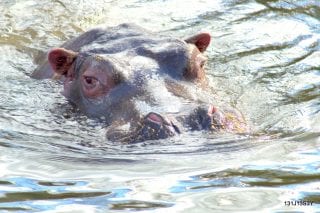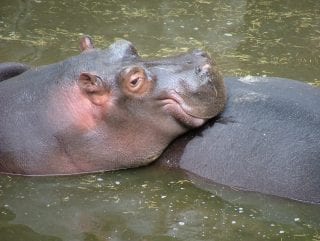Fun facts
Underwater sounds
Hippos make a variety of sounds including honking, grunting and bellowing. They can even make sounds underwater. They are the only animals that are known to do this!
Adaptations
Hippos have many adaptations for their semi-aquatic lifestyle. In the water they mostly stay in shallow water, and move by walking along the water bed. Their eyes, ears and nostrils are high on their head, allowing them to breathe and stay alert to their surroundings while they are still completely submerged in the water. Despite their size, they can also move surprisingly quickly on land.
Important Role
Hippos play an important role in their ecosystem. This is because a huge amount of nutrients are released into the water through their dung, which provides food for the other animals that live in the water. As they move from the water to the land, they also create ‘hippo paths’ that water can flow through during wet seasons, creating habitats for small fish during droughts.
Blood Sweat
Hippos secrete an oily red substance called "blood sweat" through their skin. This substance protects the hippo’s skin from the sun, and can also prevent the growth of bacteria that cause disease.



